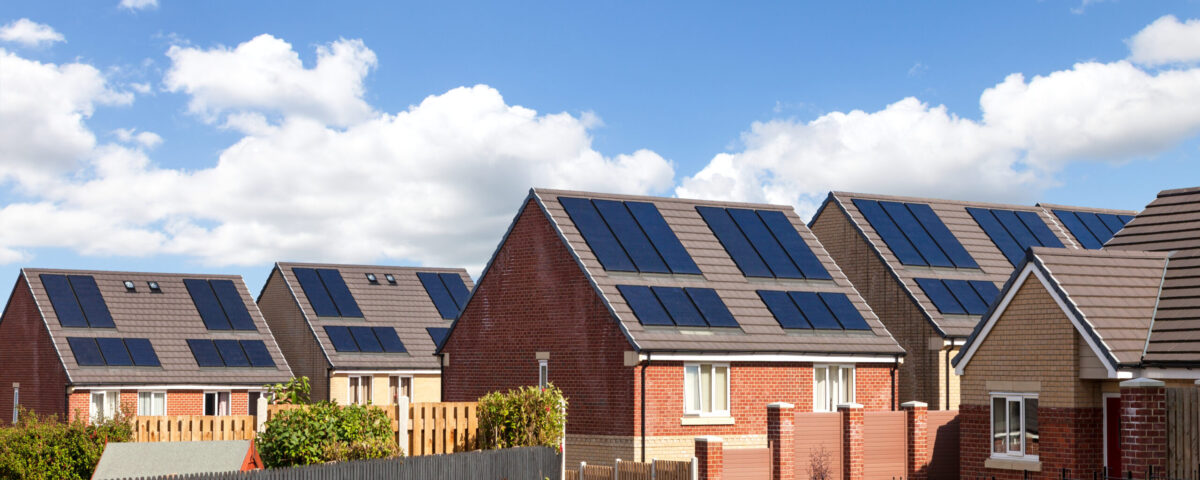
Just how safe are EVs?
16 April 2024
Summer EV driving: Six tips for beating the heat
20 July 2024Unlocking the power of HEMS
When it comes to electric vehicles (EVs), the talk of the town often revolves around squeezing the most miles out of a single charge.
That’s not surprising.
More range means less frequent top-ups and the comfort of relying mostly on home EV charging.
But how do you make home charging not just convenient but also cost-effective?
Enter the Home Energy Management System (HEMS), a game-changer in the world of efficient EV charging.
This guide’s aim is to help you minimise charging costs at home using HEMS. We’ll cover:
- What is HEMS and how it can improve your EV charging experience
- How to recognise a good HEMS
- 3 tips for using HEMS to charge your EV for less
HEMS — what is it & why you should care
Let’s cut to the chase: what exactly is a Home Energy Management System (HEMS)?
Think of HEMS as the brains of your home’s energy use.
It’s a sophisticated blend of hardware and software designed to oversee, control and streamline how your home uses energy. This isn’t just about turning off a light remotely; it’s about creating an energy-efficient ecosystem in your home.
The hardware part of HEMS includes meters and sensors connected to your home appliances.
That includes your EV charger, and if you’re harnessing the power of the sun, your solar panels and batteries, too. These gadgets are the eyes and ears of the system. They constantly gather data on how much energy you’re using and when.
But the real magic happens in the software. This element is typically a web dashboard or a smartphone app, such as the Raya-powered Powerverse app.
Through the software you can do various things such as set your energy preferences and schedules, ensuring your appliances use electricity in the smartest way possible.
You can even, as is the case with Raya, receive recommendations on the most eco-friendly, convenient and cost-effective tariffs and times to charge based on your lifestyle.
It’s like having a personal energy assistant that talks to the hardware, collects all the important data, and delivers it to you in a way that’s quick and easy to understand.
Now, why should you as an EV owner, perk up at the mention of HEMS?
Well, it’s quite simple — HEMS can tailor your EV charging schedule to align with the best times for energy use. For example, this could be when your solar panels are basking in sunlight or during off-peak hours when electricity is cheaper.
HEMS isn’t a fancy gadget. It’s an investment in smarter, more sustainable living.
Recognising a good HEMS
There are a few elements that will tell you immediately you’re looking at a top-of-the-class energy management system:
-
- Device compatibility: The capability to integrate with all the appliances in your home, not just a select few, to monitor, control, as well as optimise all the devices in harmony.
- Real-time monitoring: Your HEMS should offer a detailed, real-time overview of how much energy you’re consuming, when, and how — any time you need it.
- User-friendly interface: Web and mobile platforms that are easy to navigate and understand. There’s no point in gathering data if you can’t find, manage, or understand it without taking a course.
- Good level of control: Advanced settings controls, such as the ability to manually turn appliances on and off, adjust timers, change your EV’s charging schedule, and so on — from any device.
- Integration with renewable energy sources: You may live in one of the 1.39 million homes in the UK that currently have solar panels. If not, you still might choose to install them tomorrow. Your existing HEMS (and EV charging setup) shouldn’t stand in the way — or cause you to double the investment because all of it needs to be changed and reinstalled.
- AI-powered analytics: There are HEMS that can connect to your EV’s charger and understand your specific circumstances, needs, and goals (financial as well as environmental). Without AI, you’re just looking at a bunch of nice charts and data points without exploring all the opportunities they present.
3 steps to using HEMS to charge your EV for less
Step #1: Set your EV charging preferences
Key factors to consider:
- EV battery range and capacity: Every EV is unique, with different battery ranges and capacities. What is the maximum charging speed your EV (and home charging setup) is compatible with? What’s your battery range (how far it can take you on a single charge) and how long does it take to top up?
- Your daily routine: Do you drive long distances regularly or does your day-to-day mostly consist of short trips to work and local grocery stores?
- Recommended battery charge level: It’s worth checking the manufacturer’s recommendations regarding the percentage to which your EV’s batteries should be charged. In most cases, it’s advisable to charge up to 80%. In others, keeping the battery charged between 25% and 75% may extend its lifetime.
- Peak and off-peak hours: Dive into your energy provider’s tariff plans to check what the peak hours are (times when demand is high, and so are the prices) and when the off-peak hours kick in (times when demand drops and prices dip). Scheduling your EV to charge at night, for example, is one of the easiest ways to optimise charging costs.
Good to know:
Some smart chargers will also allow you to not only automate charging times and optimise on costs, but also set and prioritise sustainability and the environmental benefits. For example, by choosing to use more green energy.
Setting up your EV charging preferences isn’t a set-it-and-forget-it deal. But you can make sure you’re off to a great start by:
- Prioritising off-peak hours
- Enabling your EV to charge automatically
- Ensuring charging times fit your routine and daily needs
Step #2: Integrate renewable energy sources
Integrate renewable energy sources, particularly solar panels, into your home energy setup. This reduces dependence on the grid, especially during those wallet-straining peak hours. As a result, it will lower your energy bills significantly.
Typically, the solar energy your panels generate powers whatever’s on in the house or is fed back to the grid. You get paid for it, but more often than not, it’s not a lot. In fact, it would have been cheaper to use that excess power yourself.
Here’s where it gets interesting. Pair solar panels with HEMS and it will ensure the energy you generate is used effectively within your home, prioritising EV charging when needed.
Imagine this:
You get back home from work, plug in your EV, and tell your HEMS that you need a full charge by 7 am. The system springs into action, balancing your home’s energy demands with the solar power available.
When the household energy needs peak, it temporarily pauses EV charging to avoid dipping into costly mains electricity. Later, as the demand drops, it resumes charging your car.
As night falls and off-peak electricity rates kick in, your HEMS takes advantage of these cheaper rates to continue charging your EV. Your HEMS won’t send the solar power generated if that’s not the most cost-effective option.
This smart juggling act ensures that your car is charged efficiently, using the most cost-effective energy sources available.
Step #3: Leverage the power of AI
AI thrives on data. That’s why a smart, AI-powered HEMS can become truly irreplaceable when it comes to reducing the cost of EV charging at home.
We’re not talking about excruciating prompting or a generic Q&A experience. There are HEMS that come with sophisticated AI that will:
- Predict optimal EV charging times, based on your habits: AI will learn your routine. It will dive deeper than the initial preferences and requirements you entered into the system. It will observe when you tend to charge your EV, when different energy-hungry appliances are typically running, and what the average daily electricity usage is at your house.
Based on these learnings, AI can make well-informed adjustments to your EV’s charging times (if you’ve integrated your smart charger with HEMS), making sure it doesn’t put an unnecessary dent in your budget.
- Predict and react to electricity tariff changes: Keeping up with fluctuating energy prices can be a headache. But that’s one less thing to worry about when you’ve got an AI-powered HEMS on your side.
AI will continuously analyse your electricity usage, market demand, and different tariffs available. A more advanced solution like Powerverse will even take into account weather conditions to not only react to changing conditions in real time, but also make smart predictions and plan accordingly.
That way, it can not only switch to cheaper and greener energy sources, but also decide when it’s more cost-effective to use any excess solar power generated.
- Offer personalised recommendations: Whether you’re trying to find better electricity tariffs for winter, wondering if you’ve optimised your EV charging times, or trying to cut emissions, a more advanced AI solution can analyse market data and your unique habits and electricity usage patterns to suggest the best solutions.
At Powerverse, we deliver that via Raya, our AI Energy Assistant, who can answer any queries you have and automate energy efficiency. This gives you more time to focus on what matters most.
And there you have it. Three simple steps, one massive improvement for your budget.
A smart HEMS does more than save a few quid on your electricity bills (although that’s a significant perk). It’s a solution that customises your energy usage to fit your lifestyle like a glove, including how and when you charge your EV.
You could even say, it’s a new quality of life.
About Powerverse
We’re industry experts in home energy management. Our easy-to-use app is built for your future electric home. It will effortlessly sync your solar, battery, heat pump, EV charger and more, helping you cut costs and your carbon footprint on your way to becoming energy-independent. Curious to know more? Talk to one of our experts.
Also, if you’re considering installing solar panels, we’d be more than happy to recommend several trusted partners who can provide and install them for you.

